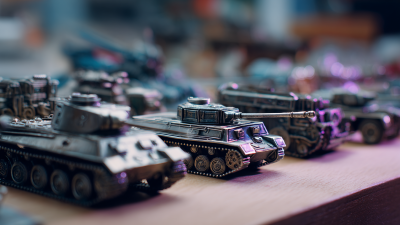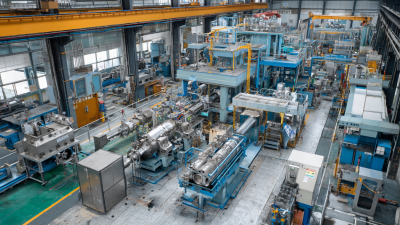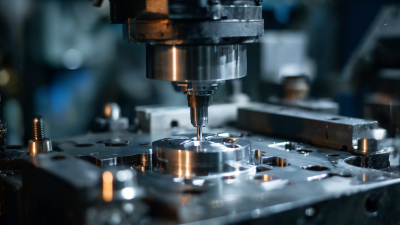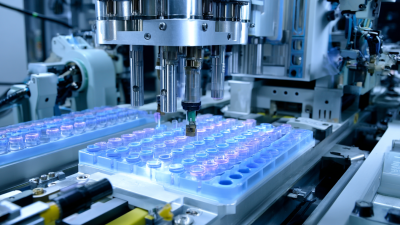10 Insights for Mastering Die Cast Plastic Techniques
The die cast plastic industry has experienced remarkable growth in recent years, driven by increasing demand for lightweight and durable components across various sectors, including automotive, electronics, and consumer goods. According to a study by MarketsandMarkets, the global die casting market size, which prominently features die cast plastic techniques, is projected to reach USD 90 billion by 2025, growing at a CAGR of 4.9%. This surge is largely attributed to the advantages of die cast plastic, such as improved design flexibility, enhanced surface finish, and reduced waste during production. As manufacturers strive to optimize their processes and innovate new applications, mastering die cast plastic techniques is essential for staying competitive in an ever-evolving landscape. In this blog, we will explore 10 key insights that can help both novices and experts refine their skills and leverage the full potential of die cast plastic in their projects.

The Evolution of Die Casting in the Plastic Industry: A Data-Driven Overview
Die casting, a method traditionally associated with metals, has seen a remarkable evolution in the plastic industry. Over the past few decades, advancements in materials science and engineering techniques have transformed this process, making it possible to produce complex plastic parts with greater precision and efficiency. This evolution is driven largely by data, as manufacturers leverage analytics to optimize their die casting processes, improve cycle times, and reduce waste. The use of simulation tools allows designers to predict how molten plastic will flow into the mold, minimizing defects and enhancing product quality.
Moreover, the expansion of thermoplastic materials has broadened the applications of die casting in the plastic sector. Innovative materials not only offer better mechanical properties but also allow for recycling and sustainability, aligning with industry trends toward eco-friendliness. Analyzing industry data has revealed insights into customer preferences and market demands, enabling manufacturers to adapt quickly. As the market continues to grow, the integration of data-driven methodologies in die casting will undoubtedly lead to further innovations, pushing the boundaries of what is possible with plastic components in various industries.
10 Insights for Mastering Die Cast Plastic Techniques
| Insight | Description | Impact on Industry | Year of Adoption |
|---|---|---|---|
| Increasing Precision | Advancements in technology have enhanced the precision of die casting. | Improved product quality and reduced waste. | 2018 |
| Material Innovation | New polymer formulations are being developed for better performance. | Increased versatility in product applications. | 2020 |
| Sustainability Practices | Focus on recycling and using eco-friendly materials. | Reduction of environmental impact. | 2021 |
| Automation Technology | Integration of automated systems in die casting processes. | Higher efficiency and lower labor costs. | 2019 |
| Data Analytics | Using data to optimize production processes and predict failures. | Increased uptime and reduced costs. | 2022 |
| Design Flexibility | Ability to design complex geometries and features. | Broader design capabilities for engineers. | 2023 |
Key Materials and Their Impact on Die Cast Plastic Quality and Performance
When it comes to die casting plastic, selecting the right materials is crucial for ensuring high quality and consistent performance. The choice of plastic resin—such as polycarbonate, polypropylene, or nylon—significantly influences the final product's strength, flexibility, and resistance to environmental factors. Polycarbonate, known for its toughness and clarity, is often preferred for applications requiring durability without compromising aesthetics. On the other hand, polypropylene offers excellent chemical resistance, making it ideal for containers used in aggressive environments. Understanding these properties helps manufacturers choose the best material suited for their specific requirements.
In addition to selecting the appropriate resin, the impact of additives cannot be overlooked. Incorporating fillers, reinforcements, and colorants can enhance performance traits, such as thermal stability and UV resistance. For instance, glass fibers are commonly added to improve tensile strength and stiffness, while UV stabilizers protect the integrity of the product outdoors. Moreover, the specific processing conditions—temperature, pressure, and cooling time—also interact with the materials chosen, affecting the overall quality of the die cast plastic. Therefore, a comprehensive knowledge of both key materials and their interactions forms the backbone of successful die cast plastic applications.
Understanding the Temperature Control Mechanisms in Die Casting Processes
Temperature control is a critical factor in mastering die cast plastic techniques, as it directly influences the quality and integrity of the final product. According to industry reports, optimal temperature ranges can significantly reduce the incidence of defects such as warping and incomplete filling, leading to higher yields and lower production costs. It is widely accepted that maintaining mold temperatures between 150°F and 200°F (65°C to 95°C) is essential for achieving the desired properties in thermoplastics used in die casting processes.
Tip #1: Regularly calibrate your temperature control systems to ensure accuracy. Fluctuations as small as 10°F can lead to major defects in the die-casting process, so consistent monitoring is key to maintaining production efficiency.
Moreover, the cooling rate of the die plays a pivotal role in shaping the mechanical properties of the final product. Fast cooling can lead to increased strength but may also introduce stresses, while slower cooling can prevent the formation of internal defects. In a comprehensive analysis by the Society of Plastic Engineers, it was reported that adjusting cooling times by just a few seconds could enhance parts durability by over 25%.
Tip #2: Utilize advanced simulation software to optimize your die design and temperature control strategies. This can help you predict how changes in temperature will affect both the cooling profile and the physical characteristics of your plastic components, ultimately leading to smarter production choices.
Temperature Control in Die Casting Processes
Innovative Techniques for Reducing Defects in Die Cast Plastic Components
Die casting plastic components can often present challenges, particularly when it comes to defects that impact functionality and appearance. Innovative techniques have emerged to address these issues, focusing on precision and efficiency throughout the manufacturing process. One such method is the use of advanced simulation software, which allows engineers to predict how materials will behave under various conditions. By modeling the die casting process in a virtual environment, manufacturers can identify potential flaws before production begins, significantly reducing the occurrence of defects in final products.
Another effective approach involves optimizing the cooling and heating phases of die casting. By implementing temperature control systems that monitor and adjust heat distribution in real-time, manufacturers can ensure uniform cooling of the plastic components. This technique not only minimizes warping and shrinkage but also enhances the overall structural integrity of the parts produced. As these innovative techniques continue to evolve, the die casting industry moves closer to achieving higher quality standards while simultaneously decreasing waste and production costs.

Analyzing Cost Efficiency: Comparing Traditional and Modern Die Casting Methods
In the evolving landscape of manufacturing, understanding cost efficiency between traditional and modern die casting methods is critical. A report on the North American Automotive Casting Market projects significant growth, emphasizing that the movement toward innovative methodologies not only enhances productivity but also addresses environmental sustainability concerns. For instance, high-pressure die casting techniques increasingly outperform traditional methods by reducing material waste and energy consumption, aligning with broader trends in sustainable manufacturing.
Moreover, the rise of additive manufacturing in sectors such as aerospace and automotive showcases an effective avenue for reducing costs while maintaining high performance. Recent studies indicate that additive manufacturing is the fastest-growing industrial technique, offering innovative, cost-effective, and environmentally friendly solutions. As manufacturers seek to balance efficiency and sustainability, exploring these modern die casting methods presents a promising opportunity for optimizing production processes and improving overall cost efficiency.

Related Posts
-

How to Choose the Best Die Cast Die for Your Manufacturing Needs
-

Top 5 Innovative Die Cast Equipment Examples Revolutionizing Manufacturing Efficiency
-

Best Die Cast Solutions: Enhancing Precision and Efficiency in Manufacturing
-

The Future of Die Casting: Innovations Shaping Tomorrow's Manufacturing
-

How to Choose the Right Die Cast Mold for Your Manufacturing Needs
-

Mastering the Essentials of Plastic Injection Molding Die Design and Production Guide
Copyright © 2025 · All Rights Reserved · Franchino Mold & Engineering
